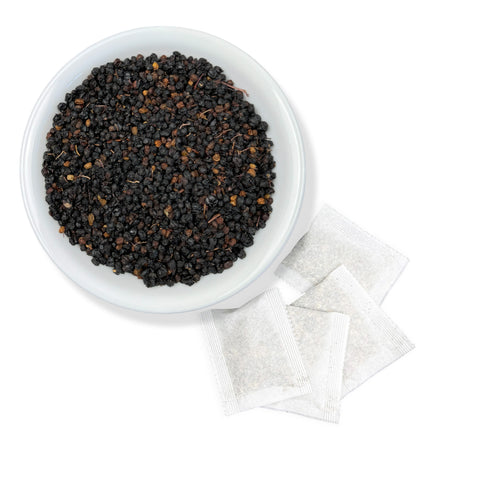
Elderberry Tea Bags - Quantity 20 Bags (2g per bag)
- + Buy ANY 5 Products, Get 1 Free! *BULK Products Included*
- + 15-Day Money Back Guarantee
- + Get It Fast! Orders Ship Same Day

Botanical Name: Sambucus nigra
Origin: Europe, North America
Discover the essence of traditional healing with our Elderberry Tea Bags, carefully selected from the finest elderberries found in the verdant regions of Europe and North America. Each of the 20 tea bags is packed with 2 grams of this cherished berry, known for its deep, rich flavors and a multitude of health benefits. Steeped in history and wellness, elderberry tea offers a simple, soothing way to incorporate the power of Sambucus nigra into your daily routine.
Health Benefits
- Supports healthy immune function
- Supports respiratory health
- May reduce inflammation
These statements have not been evaluated by the Food and Drug Administration. This product is not intended to diagnose, treat, cure, or prevent any disease.
This product is intended for nutritional support. If pregnant, nursing, or taking medication, please consult with a health professional before use.
Keep out of reach of children.

